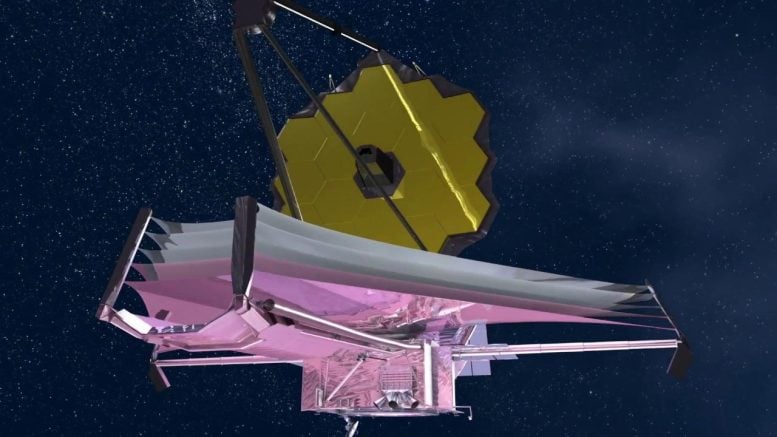
NASA’s James Webb Space Telescope is the successor to the Hubble Space Telescope, the most powerful infrared science observatory ever to be sent into space. From its orbit nearly a million miles from Earth, Webb will study some of the most distant objects in the universe. Credit: NASA
The Webb Space Telescope team continues to commission the 17 science instrument modes. They recently asked Nathalie Ouellette of the Université de Montréal to give more detail about the modes of the Near-Infrared Imager and Slitless Spectrograph (NIRISS), Canada’s scientific instrument on Webb.
“NIRISS will be able to capture both images and spectra from different types of celestial objects in near-infrared light, at wavelengths up to 5.0 microns. The NIRISS team has developed four instrument modes to collect different kinds of data that are well-suited for different targets and scientific objectives.
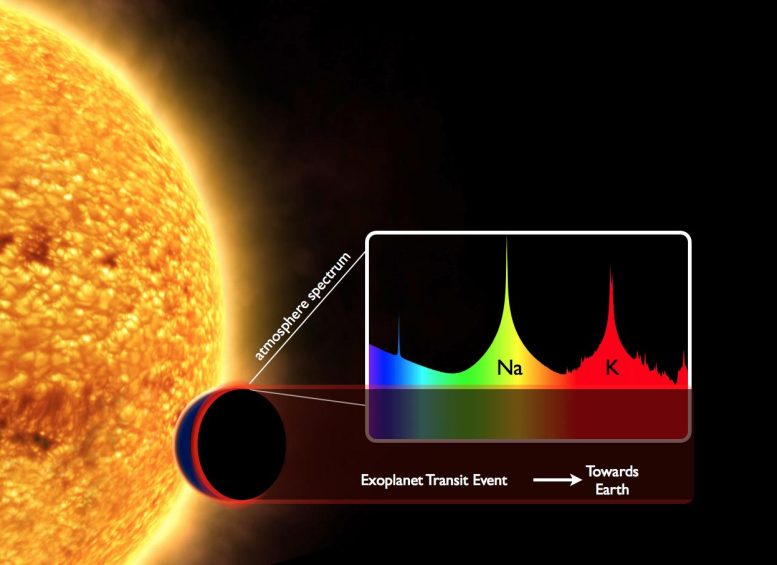
With SOSS mode, the NIRISS instrument will be able to study the atmospheres of exoplanets as they pass in front of their star using a technique called transit spectroscopy. The spectrum observed by NIRISS will act like an alien barcode, indicating the presence of certain atoms and molecules. The above illustration shows how absorption features due to sodium (Na) and potassium (K) can be seen in the visible light spectrum; Webb’s infrared light observations will be sensitive to other features such as water vapor, carbon dioxide, and methane. Credit: European Southern Observatory
Single Object Slitless Spectroscopy (SOSS)
“The SOSS mode on NIRISS allows the Webb telescope to obtain high-precision spectra from one bright object at a time. This mode is optimized to carry out time-series observations, which are ideal for studying a phenomenon that changes over the length of a typically hours-long observation, such as an exoplanet transiting in front of its host star.
“Using a technique called transit spectroscopy, the NIRISS instrument can collect a spectrum of an exoplanet’s atmosphere, which contains different markers that allow astronomers to determine its composition, temperature, potential habitability signatures, and other important characteristics.
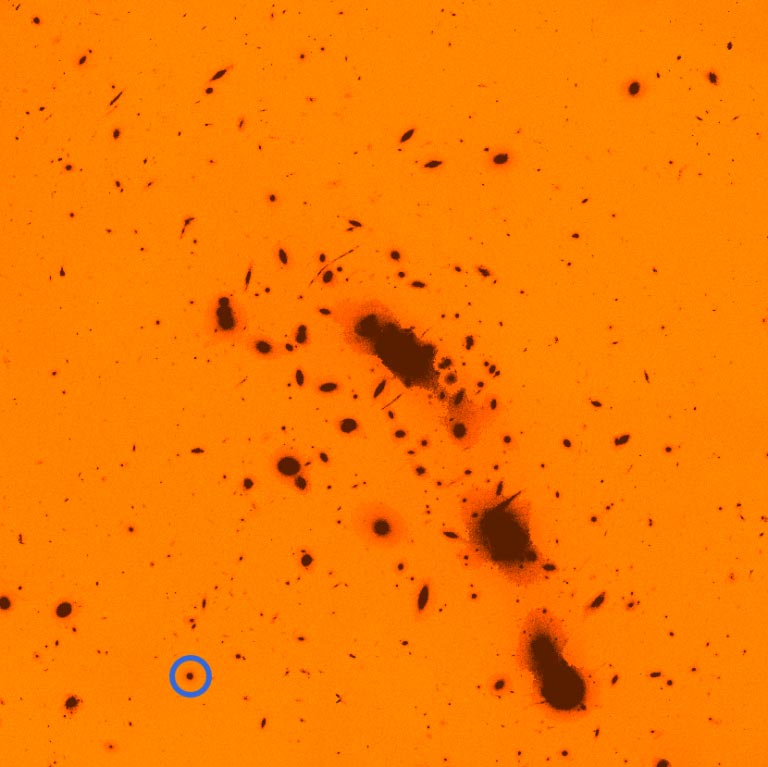
These simulated images show the galaxy cluster MACS J0416.1-2403 as it could look when observed with NIRISS in WFSS mode. Left: This is a simulation of a direct image of the cluster using only the F115W filter (no dispersion). Galaxies are seen as dots or blobs throughout. Credit: Chris Willott/National Research Council Canada, Herzberg Astronomy and Astrophysics Research Centre
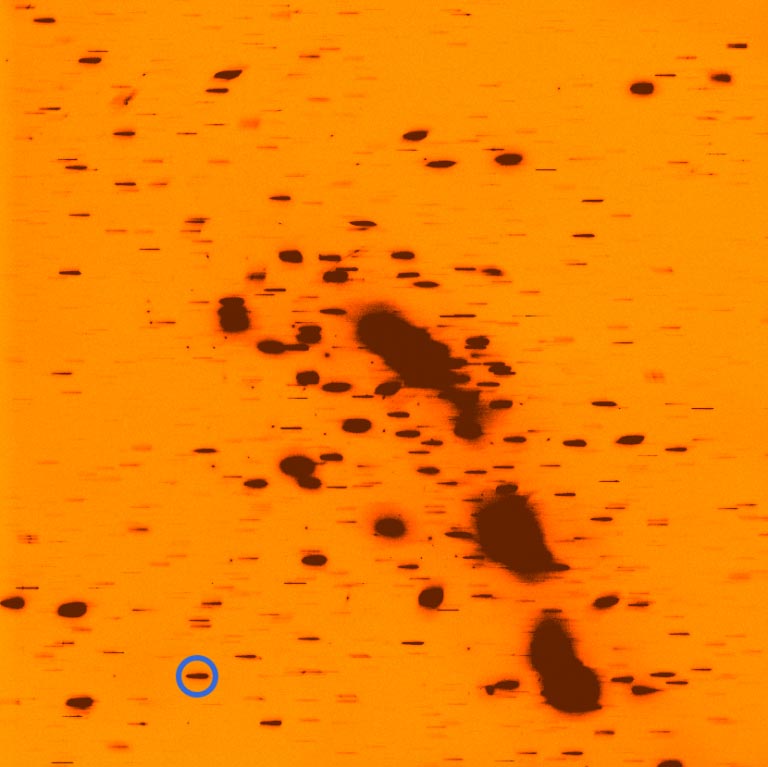
The dispersed image of the cluster as seen with the F115W filter and the GR150C grism. Individual spectra appear as the corresponding galaxy smeared horizontally. Credit: Chris Willott/National Research Council Canada, Herzberg Astronomy and Astrophysics Research Centre
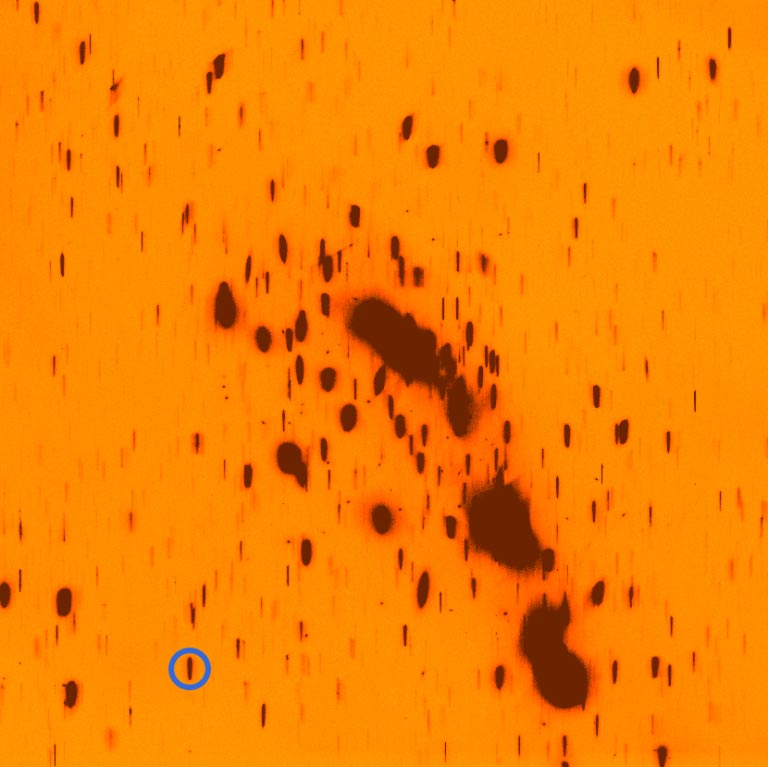
The dispersed image of the cluster as seen with the F115W filter and the GR150R grism (orthogonal to the GR150C grism used in the middle image). Individual spectra appear as the corresponding galaxy smeared vertically. One galaxy and its corresponding spectra are circled in blue in the images. Credit: Chris Willott/National Research Council Canada, Herzberg Astronomy and Astrophysics Research Centre
Wide Field Slitless Spectroscopy (WFSS)
“The WFSS mode on NIRISS allows Webb to obtain spectra but for thousands of objects, such as galaxies, at the same time over the detector’s entire field of view (4.84 arcmin2). The spectra of thousands of galaxies will enable measurement of their distances, ages, and other physical parameters to trace how galaxies evolve over the lifetime of the universe. In the simulated example shown in the figure, the galaxy cluster acts like a cosmic lens that magnifies and stretches the images of faint background galaxies, so they can be studied in even greater detail.
“Since NIRISS can collect so many spectra at a time using the WFSS mode, individual spectra can overlap if their sources are too close. There are thus two orthogonal grisms, GR150C and GR150R, that can produce spectra horizontally and vertically, respectively, which helps to disentangle blended spectra from different galaxies.
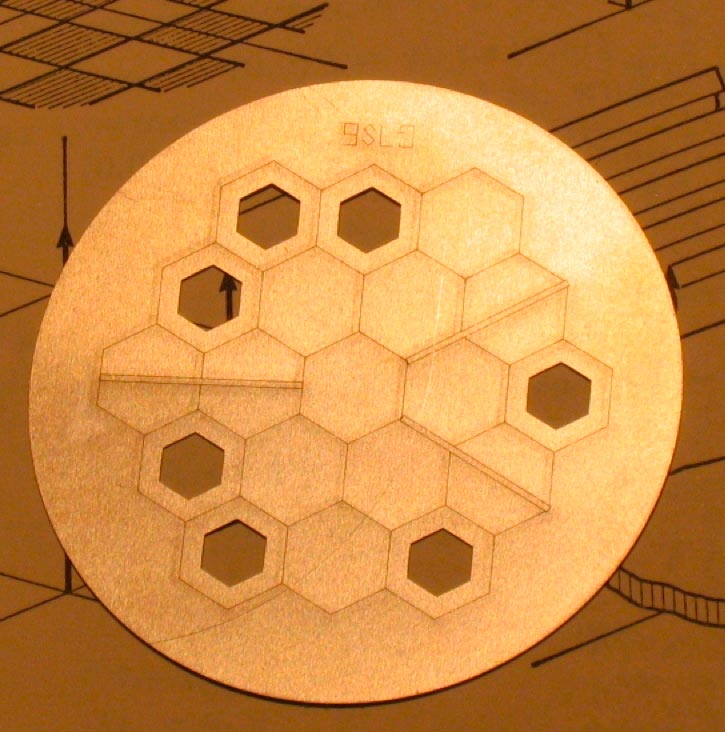
A prototype of a mask used in the Canadian NIRISS instrument in AMI mode, showing the layout of the seven hexagonal holes in the mask with respect to the Webb primary mirror segments and secondary mirror supports. Credit: Anand Sivaramakrishnan/Space Telescope Science Institute
Aperture Masking Interferometry (AMI)
“The AMI mode on NIRISS allows Webb to study objects that are very close together on the sky, using a special technique called interferometry. A mask inside the instrument allows light from only certain parts of the primary mirror to pass through. Astronomers can increase the resolution of the telescope by a factor of nearly 2.5 by looking at the patterns created as the carefully chosen beams of light interfere with each other. This allows two objects that are close to each other that would otherwise look like a single blurred point, like an exoplanet orbiting a star, to appear as two distinct points of light in a Webb image. The mask blocks out a large portion of the light, so the observed objects must be bright in order to detect them. The AMI mode will be used to observe exoplanets, brown dwarfs, and protoplanetary disks. This is the first time that such a mask is being used in space.
NIRISS Imaging
“Because of the importance of near-infrared imaging to Webb’s scientific success, NIRISS includes an imaging capability that functions as a backup to NIRCam imaging. This capability can be used in parallel, with NIRCam and NIRISS simultaneously taking images of two closely separated fields of view, imaging a larger area of an extended source.”
— Nathalie Ouellette, Webb outreach scientist, Université de Montréal
Written by Jonathan Gardner, Webb deputy senior project scientist, NASA’s Goddard Space Flight Center.

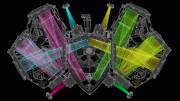
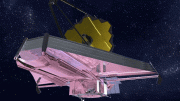
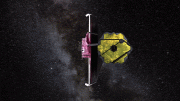

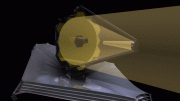
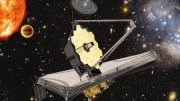
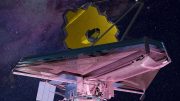
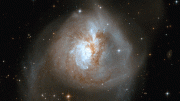
Be the first to comment on "Capturing Images and Spectra From Celestial Objects: The Modes of the Webb Space Telescope’s NIRISS"